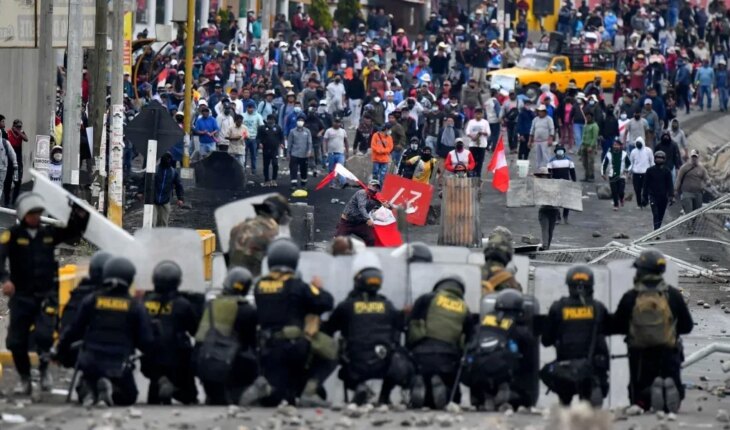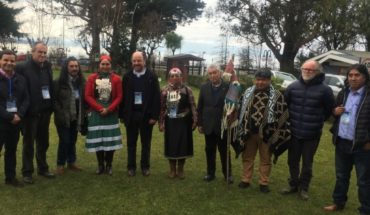Peru is mired in a political and institutional crisis that despite the fact that it exploded again after the dismissal of former President Pedro Castillo from Congress but dates back to 1990 after the coup d’état of Alberto Fujimori. From then on, all the presidencies ended in vacancy due to moral incapacity or convictions for corruption. In this scenario, the Andean country accumulates losses of 6.5 million dollars per day only in the productive sector, and in thriving sectors such as tourism it is estimated that it had similar losses, since Machupicchu, one of the seven wonders of the modern world, closed its doors to tourists and daily received 4,000 visitors. So far this year, Peru has also lost more than $160 million in mining production, especially copper, and the projected annual investment of $2 billion has also been discouraged, according to calculations by the National Society of Mining, Petroleum and Energy (SNMPE), local media reported. The Republic. Specialists in the sector warned that the production cut in the regions of Las Bambas, Antapaccay and Constancia, which concentrate more than 20% of the national copper supply, is added today not only the fear about other operations such as Falchani (lithium) or San Rafael (tin), but also a mismanagement of conflict. Along these lines, the head of the Ministry of Energy and Mines (Minem), Oscar Vera, had said a few weeks ago that he would redouble efforts to resume dialogue. However, the deaths in the protests grew since then and the figure has already climbed to 48.For the region of Cusco, the projections are not more encouraging, it is estimated that 20% of the budget it receives from mining, gas and royalty canon will be compromised, if the situation drags on, reported the local newspaper The Republic. In addition to mining, Peru bases a good contribution of its economy on tourism, an important source of employment that attracted some 4.5 million visitors, especially to Cusco for visits to the National Archaeological Park of Machupicchu. In a matter of weeks the situation changed at the archaeological site of Ollantaytambo, about 60 km from Cusco, where about 4,000 visitors arrived daily during the high season to get to know Machupicchu. “Look, there’s nothing, it’s empty,” said Juan Pablo Huanacchini Mamani, 48, who works with tourists, the news agency reported. AFP. Since December 7, the Andean country has been shaken by a deep institutional and political crisis. To this is added the violent repression of the social protests that have shaken Peru since then and scared away tourists and left the communities that depend on tourism displaced. Currently, only about 100 people flock to these tourist destinations on weekends, the only two days allowed by protesters, a concession for residents to survive. “We live from tourism (…) Now we are in a shortage of people. When there is tourism, all our people work through hotels, through restaurants, agriculture moves, “said Mamani.According to official figures from the Ministry of Tourism, the sector is registering an 83% drop in hotel occupancy and about 6.5 million dollars a day are being lost. Abel Alberto Matto Leiva, regional director of tourism, explains that in Cusco “75% of the population works directly or indirectly with tourism, 900 tour guides, 5,000 porters” during the Inca Trail to Machupicchu.Es “a chain”, he stresses, which includes “2,500 travel agencies”, food, accommodation, transportation. So far, the situation has left about 20,000 unemployed “and they continue to add up,” with projections of about 120,000 for March, he adds. With the streets deserted with tourists, hotels, restaurants and shops chose not to open to cut expenses. “We have about 250 people in Cusco, when in a good season we can have 10,000,” explained Henry Yabar, vice president of the hotel chamber of Cusco.For Yabar, the political crisis dealt a “fatal” blow: “We are talking about 95% of cancellations” and of the 12,000 hotels and lodgings in Cusco “between 25 and 30% (the smallest) have already gone bankrupt.” He expects the state to launch a “lifeline,” an emergency plan, a suspension of payment of loans contracted during the pandemic and fiscal deferrals. “We are hopeful of an improvement in July” for “those who survive.” In the craft markets, near Cusco’s Plaza de Armas, most stalls are similarly closed. Some 14,000 local artisans should see their opportunities drastically reduced, according to the authorities, whoOthers account for thousands of merchants with little or no income. The demonstrators are calling for the resignation of President Dina Boluarte, who assumed power after the dismissal and arrest of rural teacher, Pedro Castillo, on December 7 for having tried to dissolve Parliament and govern by decree in a state of emergency.
Peru: the political and institutional crisis accumulates losses of USD 6.5 million per day only in the productive sector
January 31, 2023 |





